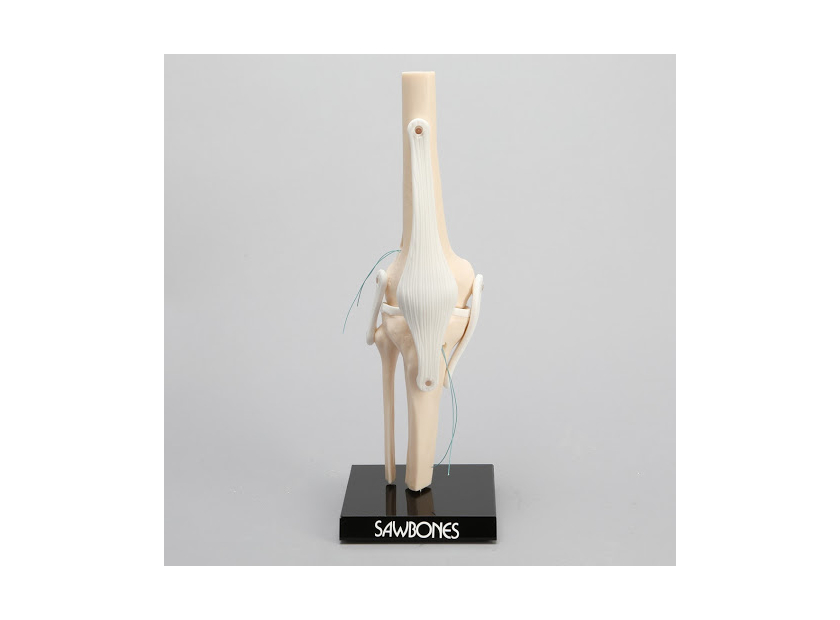Articulating vs. Non Articulating Bone Models: Comparing the Benefits of Each
The choice between articulating vs. non-articulating bone models isn't one that gets a lot of discussion. Many instructors choose to work with what they have. However, by putting a little more thought into the process, they can enhance their lesson plans. No single design works for all purposes, so educators will likely need to invest in both types of medical training models.
A general rule of thumb is to align complexity with a student's level of training. Basic, less complex models are less expensive and suitable for students in initial or beginning medical education training courses. Meanwhile, articulating models support those with a more advanced skillset and provide a more realistic experience. Going over the pros and cons of each can help instructors more wisely invest their funding.
Articulating vs. Non-Articulating Bone Models: What's the Difference?
The first thing to remember when considering articulating vs. non-articulating bone models is that it's not about bone type. It's about how the model represents the movement of these bones. There won't be an option to choose articulating features in a static bone with no joint connection.
Articulating bone models are more realistic. The bones offer a similar kinetic motion that one would find in the human body. In many cases, that motion is exaggerated for demonstration purposes. Such bone models are highly detailed and realistic. They're particularly well suited for advanced students and those in specialties focusing on motion, like orthopedic surgeons, chiropractors, physiatrists, and neurologists.
Non-articulating bone models are rigid. They may be anatomically correct, but they won't feature accurate kinetic motion. Instructors may remove certain portions during instruction, but this will be for display purposes only. They work best for early medical training before someone graduates to a more complex articulating model. They also work well for patient education, where simplicity is key.
The choice between articulating vs. non-articulating bone models typically breaks down to the student's education level. However, that's not the only consideration. Funding, class size, specialty, and more will come into play when deciding between the various options.
The Pros and Cons of Articulating/Non-Articulating Bone Models
Articulating and non-articulating bone models are excellent medical training options. They can also work as device displays and for patient education. However, they both have some positives and negatives which require consideration before purchase:
Articulating |
Non-Articulating |
|||
Pros |
|
|
||
Cons |
|
|
||
Whether you choose articulating or non-articulating bone models, the critical thing to focus on is quality. Some firms may offer cut-rate prices, but that could come at the expense of realism. To avoid issues like these, seek out a company that provides:
- Diverse materials: Solid foam is a standard go-to in models, but it doesn't offer a remarkably realistic feel. Options like composite bone are closer to the real thing. Meanwhile, solid or clear plastic materials are suitable for product displays and patient education.
- Manufacturing partnerships: Many medical model retailers source their products from different manufacturers but don't have direct partnerships. As a result, quality can vary widely. Procurement officers should seek a company with a direct manufacturing connection to enjoy consistent quality.
- Custom displays and models: Stock models are great, but they have their limitations. A company with the ability to create models to spec is invaluable in medical education. This is especially useful as new procedures and devices hit the market.
- Industry experience: It takes a lot of expertise in manufacturing, engineering, and medicine to create realistic models correctly. A company with all of this will be better suited to develop the high-level models necessary in the industry.
When it comes to articulating vs. non-articulating bone models, most instructors will need to use both for a fully rounded experience. A good company will be able to provide in-depth versions of both and additional custom options as required. Durable, high-quality bone models offer a better training experience and support medical professionals' long-term growth.

If you're seeking something you can't find on our website, our sales team is happy to help. We can either direct you to the right model or provide a free quote on the right custom project to meet your needs. Discover options with our clear bone models, laminated blocks, custom displays, or other machining projects.








